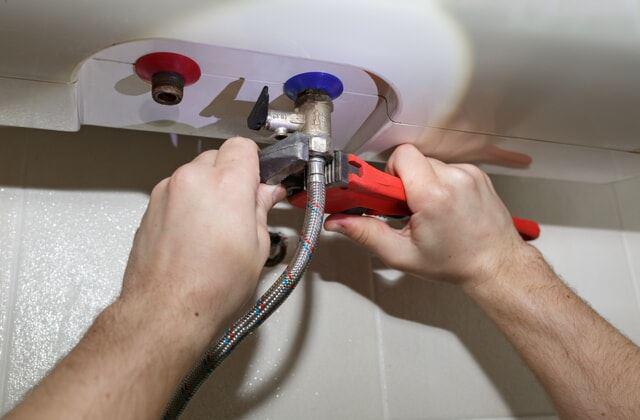Effective Strategies for Caring for Your Home's Hot Water SystemHow to Keep Your Home's Hot Water System in Good Condition
Effective Strategies for Caring for Your Home's Hot Water SystemHow to Keep Your Home's Hot Water System in Good Condition
Blog Article
We have encountered this great article pertaining to Tips For Maintaining Your Hot Water Heater down the page on the internet and think it made sense to talk about it with you on this page.

Hot water is essential for everyday comfort, whether it's for a rejuvenating shower or washing dishes. To ensure your warm water system runs successfully and lasts longer, regular upkeep is vital. This post offers sensible pointers and insights on exactly how to keep your home's warm water system to prevent interruptions and pricey fixings.
Introduction
Keeping your home's warm water system might appear challenging, but with a few simple steps, you can guarantee it runs smoothly for several years ahead. This overview covers every little thing from recognizing your warm water system to DIY maintenance suggestions and recognizing when to employ expert help.
Importance of Maintaining Your Warm Water System
Routine maintenance not just extends the life expectancy of your warm water system however also ensures it operates successfully. Neglecting upkeep can result in lowered efficiency, greater energy costs, and even early failure of the system.
Indications Your Warm Water System Needs Maintenance
Recognizing when your hot water system needs interest can stop major concerns. Keep an eye out for indications such as irregular water temperature level, strange sounds from the heater, or rusty water.
Purging the Water Heater
Flushing your water heater gets rid of sediment build-up, enhancing performance and prolonging its life.
Checking and Changing Anode Rods
Anode rods prevent deterioration inside the storage tank. Examining and changing them when worn is crucial.
Facility Problems Requiring Specialist Aid
Examples include significant leaks, electrical troubles, or if your water heater is consistently underperforming.
Routine Professional Maintenance Conveniences
Expert upkeep can consist of complete inspections, tune-ups, and guaranteeing conformity with safety criteria.
Examining and Readjusting Temperature Level Settings
Readjusting the temperature setups ensures optimum efficiency and safety.
DIY Tips for Maintenance
You can do numerous maintenance tasks on your own to keep your warm water system in top problem.
Looking for Leaks
Regularly check pipelines and connections for leaks, as these can cause water damages and greater expenses.
Recognizing Your Warm Water System
Before diving right into upkeep tasks, it's handy to understand the basic parts of your hot water system. Commonly, this includes the hot water heater itself, pipelines, anode rods, and temperature controls.
Regular Monthly Upkeep Tasks
Regular regular monthly checks can help catch small concerns before they intensify.
Checking Stress Relief Valves
Checking the stress safety valve ensures it works correctly and avoids extreme stress buildup.
Shielding Pipes
Protecting warm water pipelines lowers heat loss and can conserve power.
When to Call an Expert
While do it yourself maintenance is beneficial, some issues call for expert know-how.
Conclusion
Routine upkeep of your home's hot water system is necessary for efficiency, durability, and expense savings. By complying with these tips and understanding when to look for expert aid, you can guarantee a trusted supply of hot water without unforeseen disruptions.
How to Maintain an Instant Hot Water Heater
Before tinkering with your hot water heater, make sure that it’s not powered on. You also have to turn off the main circuit breaker and shut off the main gas line to prevent accidents. Also turn off the water valves connected to your unit to prevent water from flowing into and out of the appliance. 2. When you’re done, you have to detach the purge valves’ caps. These look like the letter “T” and are situated on either side of the water valves. Doing so will release any pressure that has accumulated inside the valves while at the same time avoid hot water from shooting out and burning your skin. 3. When the purge valves’ caps are removed, you have to connect your hosing lines to the valves. Your unit should have come with three hoses but if it didn’t, you can purchase these things from any hardware or home repair shops. You can also get them from retail stores that sell water heating systems. Read the user’s manual and follow it to complete this task properly. When the hosing lines are connected, open the purge port’s valves. 4. You should never use harsh chemical cleaners or solutions when cleaning your unit. Make use of white vinegar instead. It should be undiluted and you’ll probably use about 2 gallons. 5. Now flush your water heater. This task should probably take about 40 minutes. We can’t give you specific directions for this because the procedure is carried out depending on the type, model and brand of your heater. With that being said, refer to the user’s manual. 6. When you’re done draining the unit, you have to turn off the purge port valves again. Remove the hosing lines that you earlier installed on each of the water valves. Put the valve caps (purge port) back in their respective places and be very careful so as not to damage the rubber discs that are found inside these caps. 7. Now that everything’s back in place, check your user’s manual again to find out how to reactivate your water heating system. 8. Once it is working, turn one of your hot water faucets on just to let air pass through the heater’s water supply pipes. Leave the tap on until water flows smoothly out of it. https://www.orrplumbing.com/blog/2014/september/how-to-maintain-an-instant-hot-water-heater/

I was guided to that write-up on What Kind of Maintenance Do Water Heaters Need? through a friend on our other web property. Sharing is good. Helping others is fun. Thanks a lot for being here. Kindly check up our site back soon.
Schedule Service Pickup Report this page